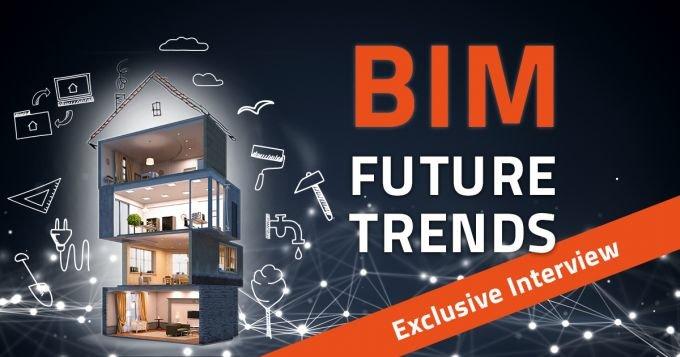How would you tell people exactly what an online component catalog is?
Stefan Günter: In this age of digital transformation, classical methods of communication between the manufacturer and the customer, such as trade fairs, printed catalogs or magazines, are increasingly playing a subordinate role. Digital platforms are becoming more attractive by drawing near to the customer, which makes it possible to offer the right product at the right place at the right time. An online component catalog is the ideal solution to exploit this immense potential in the best possible way.
Numerous manufacturers of architecture components, however, still don’t provide sufficient digital data. For this reason, architects and planners have to first take the trouble of requesting 2D & 3D BIM CAD data from the manufacturer and then tediously search for and gather all the relevant information for the components to be used. With an online component catalog – also called an Electronic Product Catalog – manufacturers of components can provide their products digitally just the way architects and planners need them for their designs.
Manufacturers of architecture components benefit the same as architects and planners from an online component catalog and the provided digital product data as 2D & 3D BIM CAD data. The 2D & 3D BIM CAD data of building components can be used by planners easily without manual effort with just a few clicks in their designs within their CAD system. Time-consuming search is thus reduced to a minimum for architects and planners. At the same time, free space is created for actual creative planning work and misunderstanding or errors in planning and design are significantly reduced.
What options do architects and planners have for the configuration of components?
Stefan Günter: Products are becoming increasingly more complex and multifaceted. To keep the consulting fees and thus the costs for manufacturers of building components from becoming immeasurable, there is the option of creating a product configurator. We create a set of rules together with the manufacturer, which we will then implement with our software solution for Electronic Product Catalogs. Architects and planners can configure the component online for its intended purpose. This means that misinterpretations and the combinations of values can be excluded beforehand. Moreover, it can be avoided that architects and planners include components in their designs that the manufacturer doesn’t offer in his portfolio.
A product configurator makes it possible to provide products as 2D & 3D BIM CAD data in thousands of variations as CAD downloads which the manufacturer could never do on his own. The corresponding CAD model, according to customer configuration, is generated individually "on-the-fly" for the user, based on his selection and preferred CAD system.
How are architects and planners optimally supported in their building projects?
Stefan Günter: Manufacturers of building components must ask themselves what information their customers from the various industries really need for their designs and product selection. Each occupational group has its own standards and each country has different requirements as well as needs for information regarding product properties. Architects require e.g. different types of information when planning a building than the facility management, which takes care of maintenance later on. It’s easy to lose the overview of components as a provider.
When manufacturers wish to market their products worldwide in all relevant industries, huge amounts of data come together quickly which have to be provided and kept up to date. With 13 classifications, 12 languages, 100 CAD formats, 3 CAD versions and 5 levels of development (LOD), there are 240,000 data combinations of a product variant possible. One manufacturer alone can’t provide and maintain such a variety of information. It’s easily possible with a professional provider of Electronic Product Catalogs and increases the component manufacturer’s competitiveness immensely.
There is yet another advantage for architects and planners: The integrated 2D & 3D BIM CAD objects are always up to date, thanks to the consistent linking to the original manufacturer data. If the manufacturer modifies product information in his Electronic Product Catalog, those modifications are automatically taken over in the existing designs in, for example, the CAD system Autodesk Revit.
Will artificial intelligence have an impact on BIM and Electronic Product Catalogs in the future?
Stefan Günter: In the framework of a research project about knowledge-based planning, we are working on supporting architects, planners and engineers with an intelligent knowledge database, regardless of their professional experience or their own personal level of knowledge, so that designs can be implemented quickly and error-free.
In doing so, diverse machine learning methods will be used to help analyze and evaluate thousands of input sequences and constructive correlations of previous planning projects. Based on such a components knowledge database, the system anticipates already during the current planning process which components or assemblies could be next and suggests suitable components for the architect or planner.
This largely compensates for the lack of specific knowledge or years of professional experience, e.g. with career beginners. For companies, this shortens the learning phases of junior staff who have little experience. Moreover, the experienced specialists will also benefit from the intelligent knowledge database.
Interview: Stefan Günter
Stefan Günter has been active at CADENAS GmbH in the area of software development for product wizards since 2003. He has been Product Manager BIM / Vice President BIMcatalogs.net since 2015 and is thus responsible for the entire development in the division. He also keeps up with current trends and technological developments concerning the topic of BIM / Digital Construction.
CADENAS GmbH
Schernecker Str. 5
86167 Augsburg
Telefon: +49 (821) 258580-0
Telefax: +49 (821) 258580-999
http://www.cadenas.de
![]()
